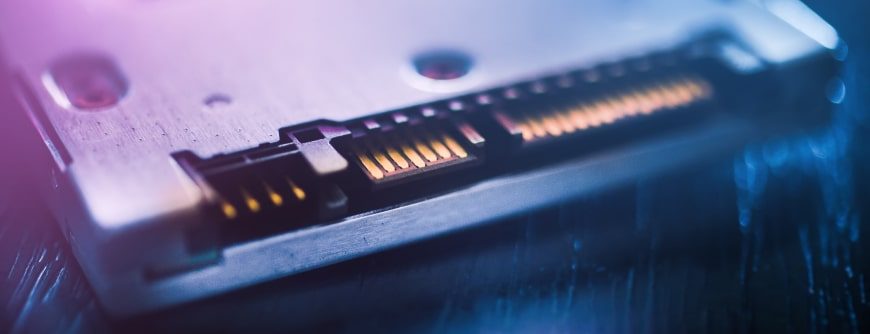Devo comprar um SSD QLC ou TLC para meu NAS, SAN ou servidor?
Agora que abordamos as principais diferenças entre SSDs QLC e SSDs TLC, vamos analisar mais detalhadamente as situações em que você pode usar uma em vez da outra.
Embora as unidades TLC tenham se tornado comuns e agora tenham a maior participação de mercado, as unidades QLC estão começando a se recuperar. No entanto, é improvável que sua adoção seja tão rápida quanto a das SSDs TLC, a menos que seu desempenho melhore significativamente.
As unidades QLC funcionam muito bem para a finalidade pretendida, ou seja, como unidades de baixo custo para substituir HDDs em cargas de trabalho de leitura pesada. Às vezes, seu desempenho máximo pode ser comparável ao de unidades baseadas em TLC avançadas, dependendo do fabricante, mas seu desempenho em situações de estado estável ainda fica muito atrás.
Como mencionado acima, as SSDs QLC oferecem um custo de armazenamento menor por capacidade do que as SSDs TLC. Portanto, se sua SAN ou NAS tiver, ou terá, mais operações de leitura do que gravação, uma unidade QLC provavelmente será a melhor escolha.
Por acaso, muitos dos aplicativos de nível corporativo mais populares de hoje em dia são mais pesados em leitura do que em gravação.
Entre elas:
- Análise de dados
- INTELIGÊNCIA ARTIFICIAL
- Bancos de dados NoSQL
- Redes de transmissão de mídia e entrega de conteúdo
Portanto, se o seu aplicativo envolver qualquer uma das opções acima, é provável que você se beneficie escolhendo QLCs em vez de TLCs.
Quando usar SSDs TLC em SSDs QLC
Se o desempenho, a resistência e a confiabilidade forem mais importantes para você do que o custo ou a capacidade de armazenamento, uma SSD TLC geralmente será uma escolha melhor do que uma SSD QLC, supondo que seu orçamento possa acomodar o preço mais alto das SSDs TLC.
O melhor desempenho e confiabilidade das SSDs TLC normalmente as tornam uma escolha melhor para coisas como:
- Unidades USB
- SSDs de nível corporativo e de consumo
- Cartões de armazenamento para câmeras digitais e telefones celulares
O veredito: SSDs QLC x SSDs TLC
As SSDs QLC podem armazenar mais dados do que as SSDs TLC e também custam menos. No entanto, eles não têm um desempenho tão bom ou duram tanto tempo, e podem ser mais propensos a erros. As SSDs TLC têm melhor desempenho e duram mais do que as SSDs QLC, mas armazenam menos dados e custam mais.
É muito importante ter em mente que a qualidade das SSDs pode variar muito de fabricante para fabricante, e também que suas necessidades devem orientar suas escolhas.
Precisa de mais armazenamento de dados? Experimente o FlashArray//C para SSD QLC
Por meio do FlashArray//C da Pure Storage ® FlashArray//C, a Pure Storage oferece outro nível de memória flash. O FlashArray//C usa os módulos DirectFlash ® da Pure, que reduzem a latência e aumentam a taxa de transferência permitindo que o flash bruto se conecte diretamente via NVMe . Isso permite que o FlashArray//C otimize seu desempenho do módulo flash enquanto ainda oferece custos por capacidade comparáveis aos arrays de armazenamento híbridos e HDD.
O FlashArray//C também oferece:
- Uma solução moderna de armazenamento de dados que oferece agilidade operacional para lidar com cargas de trabalho sensíveis ao desempenho e orientadas à capacidade
- Um único painel para gerenciar todos os recursos de armazenamento
- O Evergreen™ Storage permite upgrades não disruptivos, sem tempo de inatividade nem migrações de dados
Saiba mais sobre o FlashArray//C aqui .


